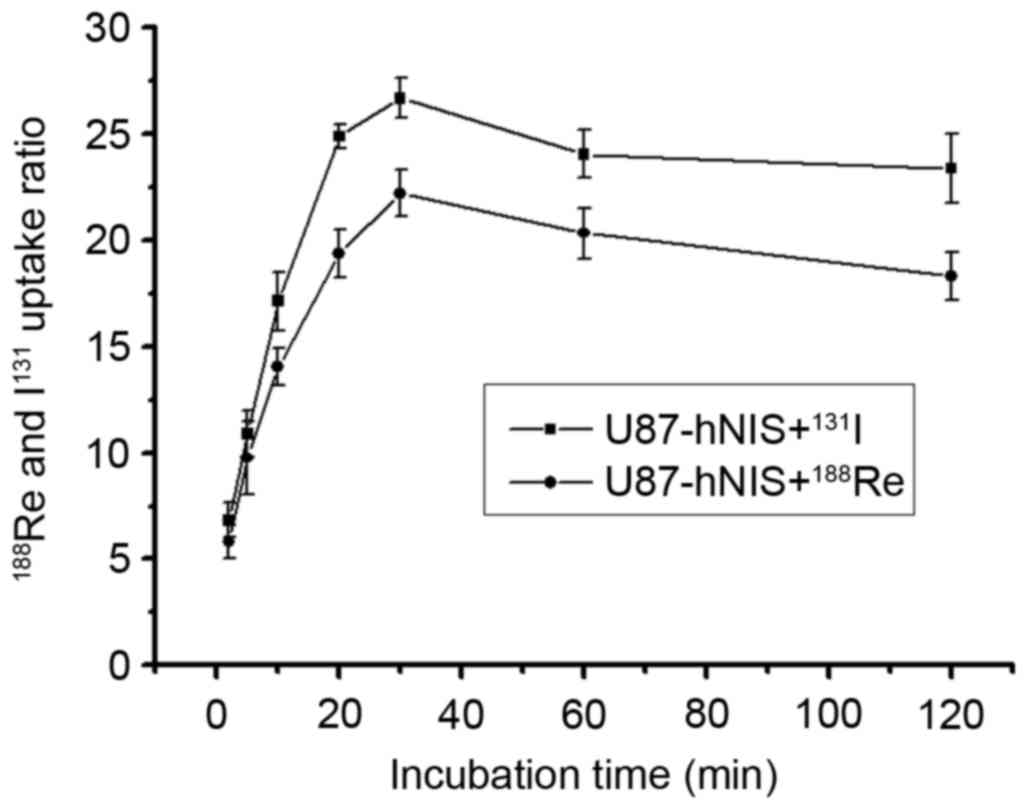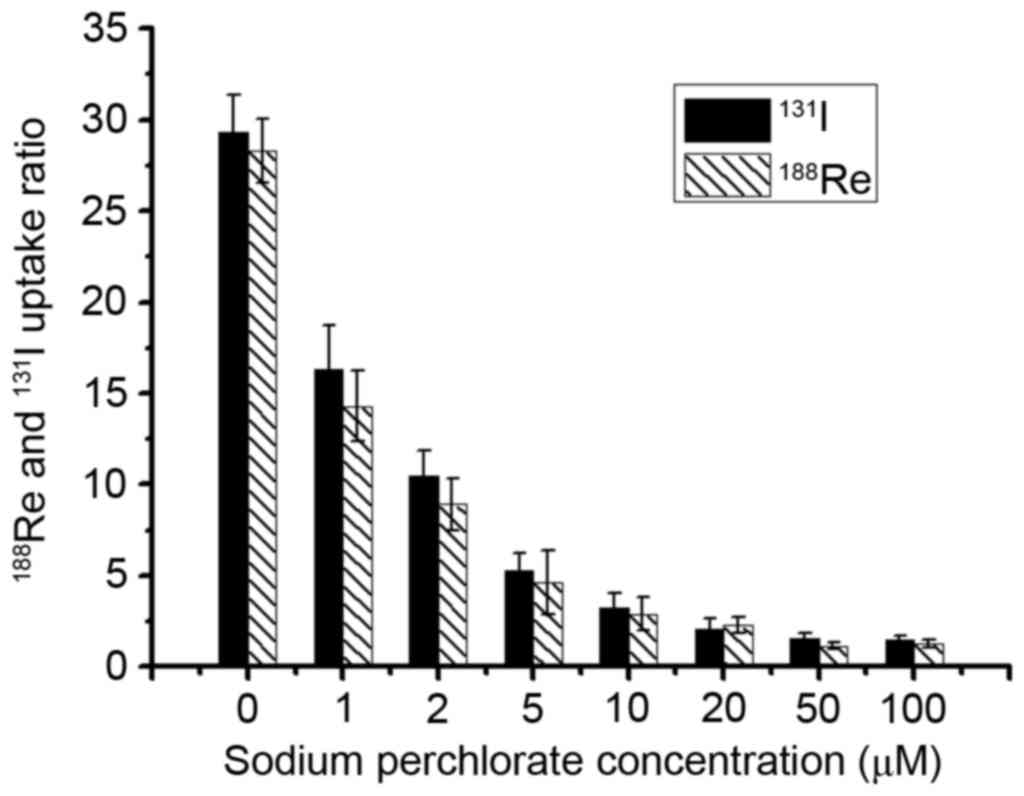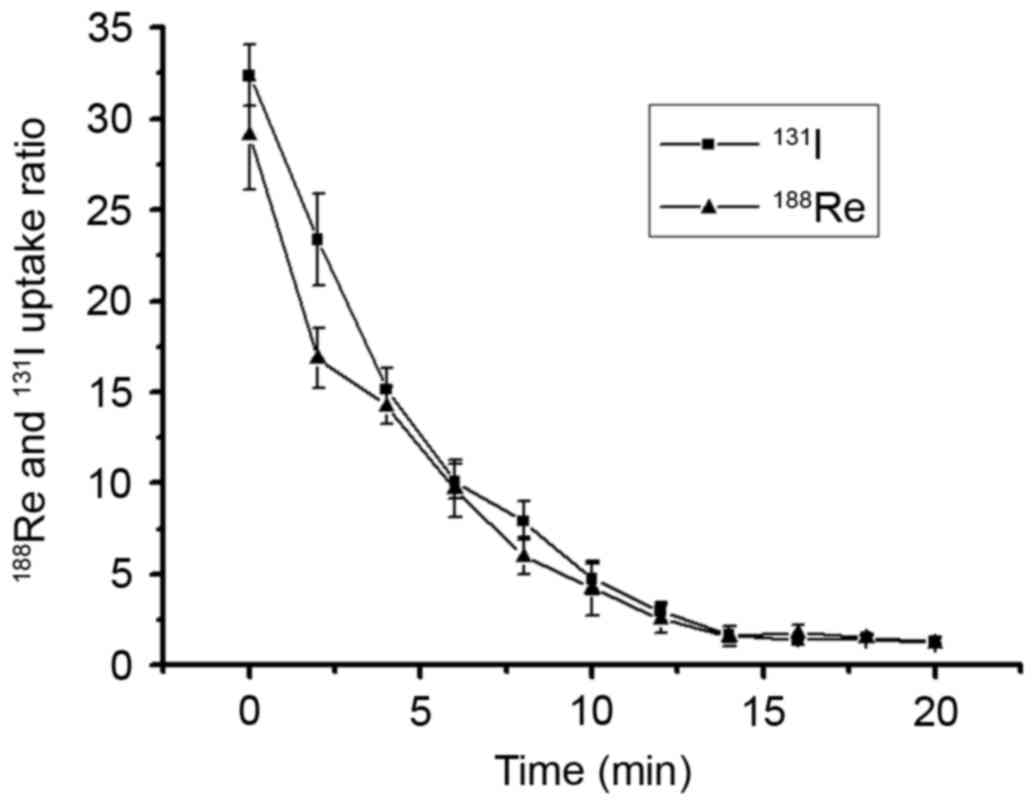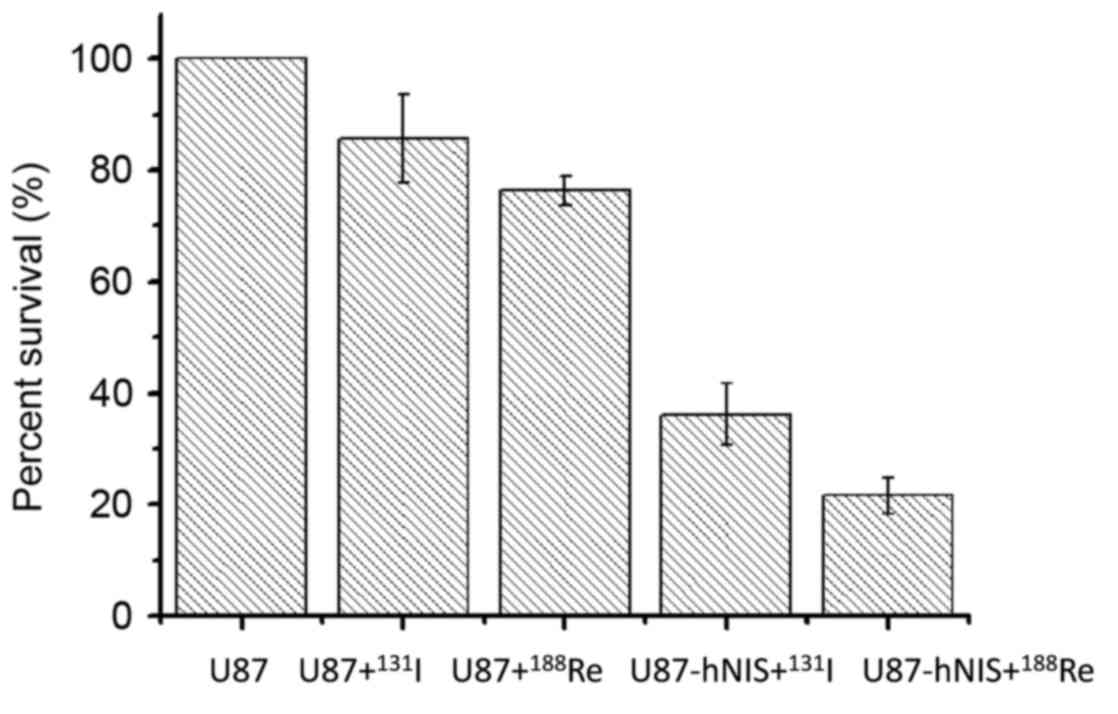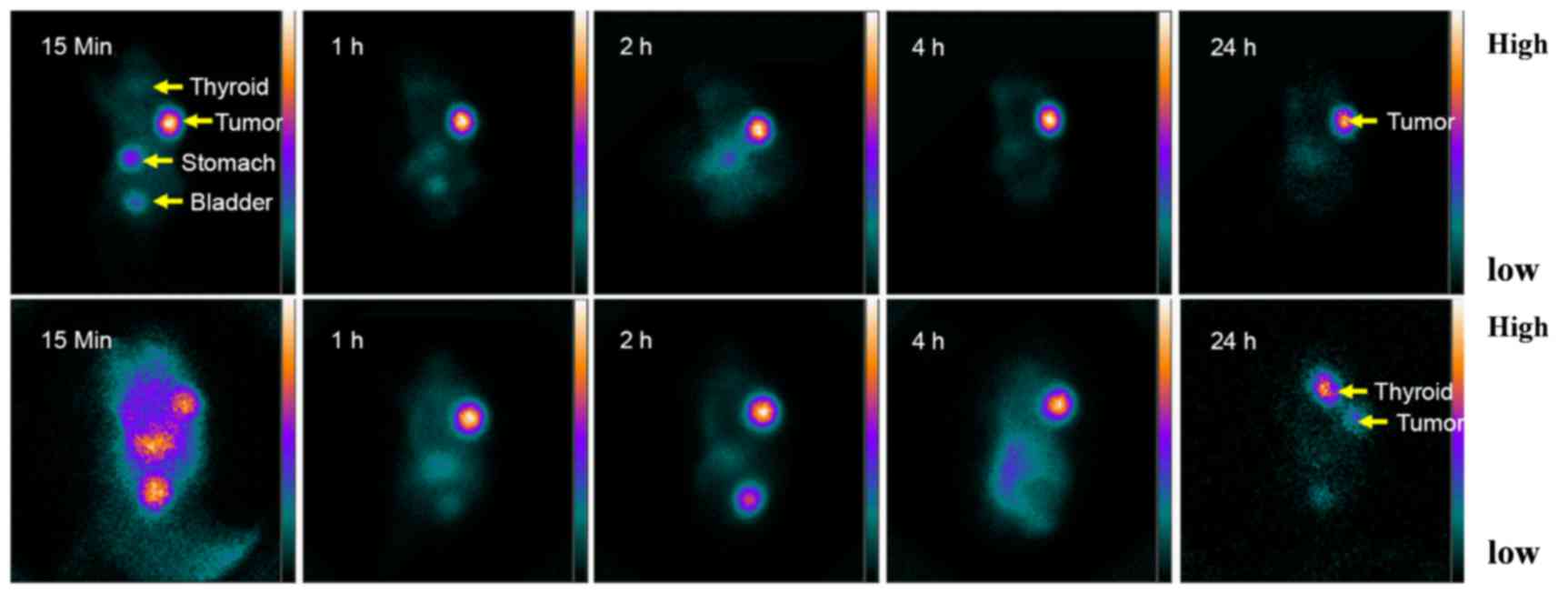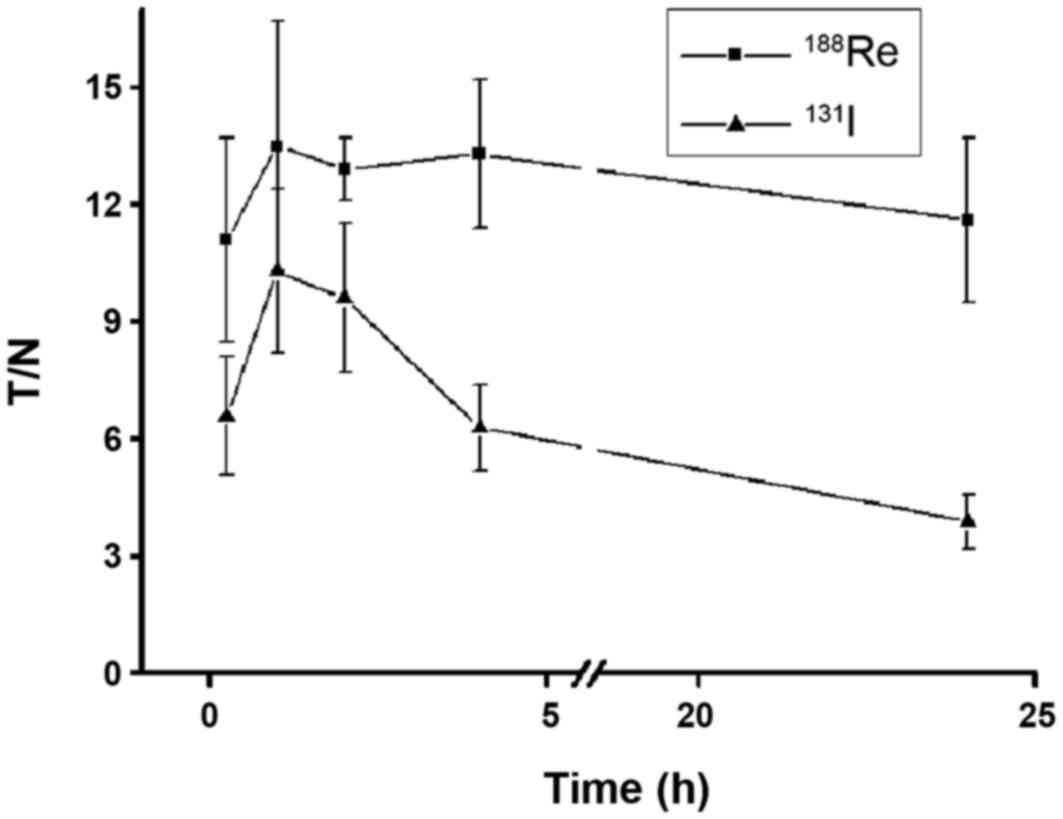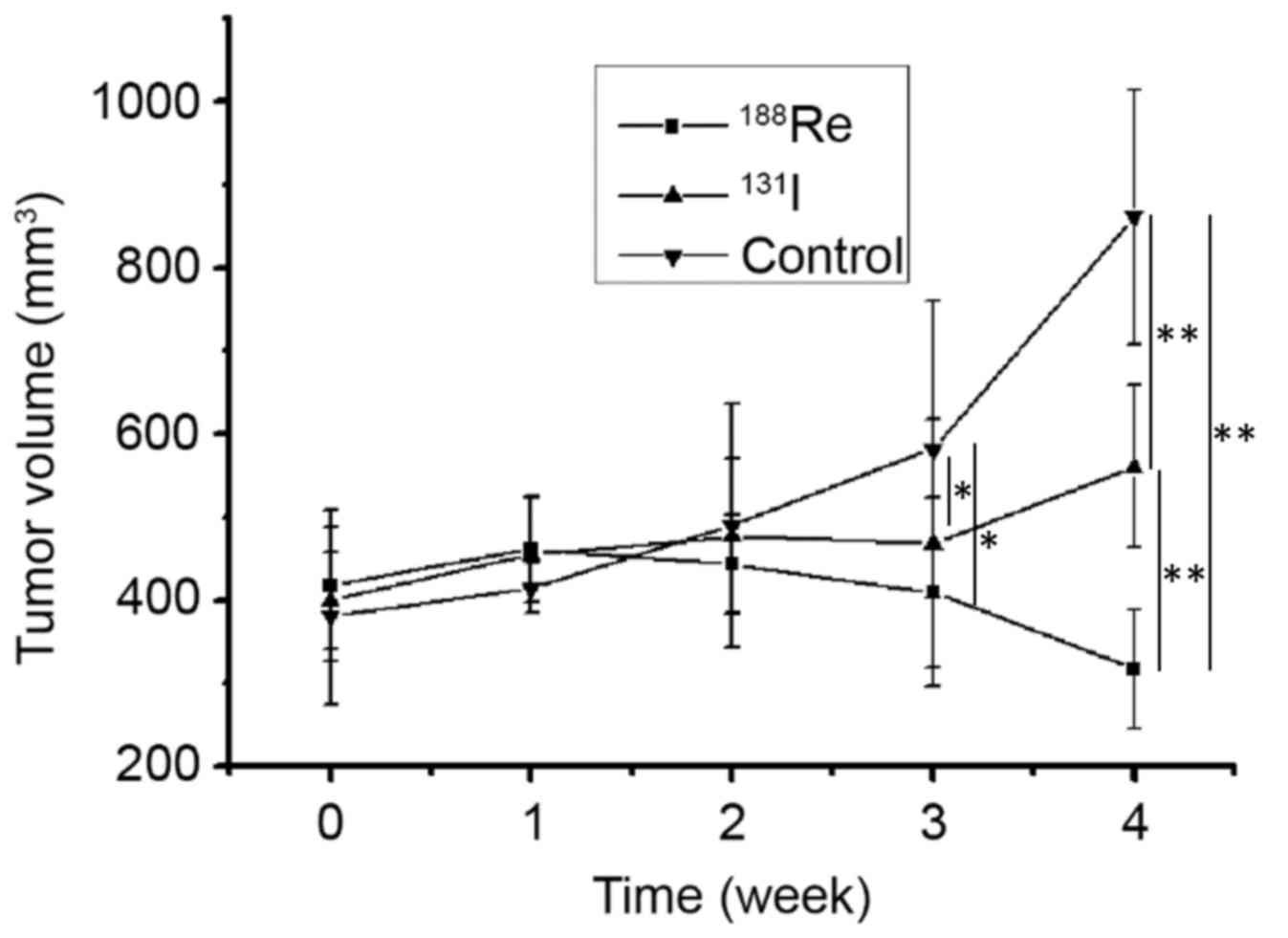|
1
|
D'Amico RS, Englander ZK, Canoll P and
Bruce JN: Extent of resection in glioma-a review of the cutting
edge. World Neurosurg. 103:538–549. 2017. View Article : Google Scholar : PubMed/NCBI
|
|
2
|
Sulman EP, Ismaila N, Armstrong TS, Tsien
C, Batchelor TT, Cloughesy T, Galanis E, Gilbert M, Gondi V, Lovely
M, et al: Radiation therapy for glioblastoma: American society of
clinical oncology clinical practice guideline endorsement of the
American society for radiation oncology guideline. J Clin Oncol.
35:361–369. 2017. View Article : Google Scholar : PubMed/NCBI
|
|
3
|
Prados MD and Levin V: Biology and
treatment of malignant glioma. Semin Oncol. 27(3 Suppl 6): S1–S10.
2000.
|
|
4
|
Brandes AA, Rigon A and Monfardini S:
Radiotherapy of the brain in elderly patients. Contra. Eur J
Cancer. 36:447–452. 2000. View Article : Google Scholar : PubMed/NCBI
|
|
5
|
Grau JJ and Verger E: Radiotherapy of the
brain in elderly patients. Pro. Eur J Cancer. 36:443–447. 2000.
View Article : Google Scholar : PubMed/NCBI
|
|
6
|
Tazebay U, Wapnir IL, Levy O, Dohan O,
Zuckier LS, Zhao QH, Deng HF, Amenta PS, Fineberg S, Pestell RG and
Carrasco N: The mammary gland iodide transporter is expressed
duringlactation and in breast cancer. Nat Med. 6:871–878. 2000.
View Article : Google Scholar : PubMed/NCBI
|
|
7
|
Spitzweg C, Zhang S, Bergert ER, Castro
MR, McIver B, Heufelder AE, Tindall DJ, Young CY and Morris JC:
Prostate-specific antigen (PSA) promoter-driven androgen-inducible
expression of sodium iodide symporter in prostate cancer cell
lines. Cancer Res. 59:2136–2141. 1999.PubMed/NCBI
|
|
8
|
Mandell RB, Mandell LZ and Link CJ Jr:
Radioisotope concentrator gene therapy using the sodium/iodide
symporter gene. Cancer Res. 59:661–668. 1999.PubMed/NCBI
|
|
9
|
Cho J, Xing S, Liu X, Buckwalter TL, Hwa
L, Sferra TJ, Chiu IM and Jhiang SM: Expression and activity of
human Na+/I-symporter in human glioma cells by adenovirus-mediated
gene delivery. Gene Ther. 7:740–749. 2000. View Article : Google Scholar : PubMed/NCBI
|
|
10
|
Dingli D, Diaz RM, Bergert ER, O'Connor
MK, Morris JC and Russell SJ: Genetically targeted radiotherapy for
multiple myeloma. Blood. 102:489–496. 2003. View Article : Google Scholar : PubMed/NCBI
|
|
11
|
Schmohl KA, Gupta A, Grünwald GK,
Trajkovic-Arsic M, Klutz K, Braren R, Schwaiger M, Nelson PJ, Ogris
M, Wagner E, et al: Imaging and targeted therapy of pancreatic
ductal adenocarcinoma using the theranostic sodium iodide symporter
(NIS) gene. Oncotarget. 16:33393–33404. 2017.
|
|
12
|
Zhang M, Guo R, Xu H, Zhang M and Li B:
Retinoic acid and tributyrin induce in-vitro radioiodine uptake and
inhibition of cell proliferation in a poorly differentiated
follicular thyroid carcinoma. Nucl Med Commun. 32:605–610. 2011.
View Article : Google Scholar : PubMed/NCBI
|
|
13
|
Guo R, Zhang R, Pan Y, Xu H, Zhang M,
Liang S, Wang L, Zhang Y and Li B: Feasibility of a novel positive
feedback effect of 131I-promoted Bac-Egr1-hNIS expression in
malignant glioma through baculovirus: A comparative study with
Bac-CMV-hNIS. Nucl Med Commun. 32:402–409. 2011. View Article : Google Scholar : PubMed/NCBI
|
|
14
|
Guo R, Tian L, Han B, Xu H, Zhang M and Li
B: Feasibility of a novel positive feedback effect of 131I-promoted
Bac-Egr1-hNIS expression in malignant glioma via baculovirus. Nucl
Med Biol. 38:599–604. 2011. View Article : Google Scholar : PubMed/NCBI
|
|
15
|
Guo R, Zhang Y, Liang S, Xu H, Zhang M and
Li B: Sodium butyrate enhances the expression of
baculovirus-mediated sodium/iodide symporter gene in A549 lung
adenocarcinoma cells. Nucl Med Commun. 31:916–921. 2010.PubMed/NCBI
|
|
16
|
Mallick UK and Charalambous H: Current
issues in the management of differentiated thyroid cancer. Nucl Med
Commun. 25:873–881. 2004. View Article : Google Scholar : PubMed/NCBI
|
|
17
|
Nakamoto Y, Saga T, Misaki T, Kobayashi H,
Sato N, Ishimori T, Kosugi S, Sakahara H and Konishi J:
Establishment and characterization of a breast cancer cell line
expressing Na+/I-symporters for radioiodide concentrator gene
therapy. J Nucl Med. 41:1898–1904. 2000.PubMed/NCBI
|
|
18
|
Dadachova E, Bouzahzah B, Zuckier LS and
Pestell RG: Rhenium-188 as an alternative to iodine-131 for
treatment of breast tumors expressing the sodium/iodide symporter
(NIS). Nucl Med Biol. 29:13–18. 2002. View Article : Google Scholar : PubMed/NCBI
|
|
19
|
Lambert B and de Klerk JM: Clinical
applications of 188Re-labelled radiopharmaceuticals for
radionuclide therapy. Nucl Med Commun. 27:223–229. 2006. View Article : Google Scholar : PubMed/NCBI
|
|
20
|
Dadachova E, Nguyen A, Lin EY, Gnatovskiy
L, Lu P and Pollard JW: Treatment with rhenium-188-perrhenate and
iodine-131 of NIS-expressing mammary cancer in a mouse model
remarkably inhibited tumor growth. Nucl Med Biol. 32:695–700. 2005.
View Article : Google Scholar : PubMed/NCBI
|
|
21
|
Höher M, Wöhrle J, Wohlfrom M, Kamenz J,
Nusser T, Grebe OC, Hanke H, Kochs M, Reske SN, Hombach V and
Kotzerke J: Intracoronary beta-irradiation with a
rhenium-188-filled balloon catheter: A randomized trial in patients
with de novo and restenotic lesions. Circulation. 107:3022–3027.
2003. View Article : Google Scholar : PubMed/NCBI
|
|
22
|
Murray A, Simms MS, Scholfield DP, Vincent
RM, Denton G, Bishop MC, Price MR and Perkins AC: Production and
characterization of 188Re-C595 antibody for radioimmunotherapy of
transitional cell bladder cancer. J Nucl Med. 42:726–732.
2001.PubMed/NCBI
|
|
23
|
Dadachova E, Bouzahzah B, Zuckier LS and
Pestell RG: Rhenium-188 as an alternative to Iodine-131 for
treatment of breast tumors expressing the sodium iodide/symporter
(NIS). Nucl Med Biol. 29:13–18. 2002. View Article : Google Scholar : PubMed/NCBI
|
|
24
|
Guo R, Zhang M, Xi Y, Ma Y, Liang S, Shi
S, Miao Y and Li B: Theranostic studies of human sodium iodide
symporter imaging and therapy using 188Re: A human glioma study in
mice. PLoS One. 9:e1020112014. View Article : Google Scholar : PubMed/NCBI
|
|
25
|
Weiss SJ, Philp NJ and Grollman EF: Iodide
transport in a continuous line of cultured cells from rat thyroid.
Endocrinology. 114:1090–1098. 1984. View Article : Google Scholar : PubMed/NCBI
|
|
26
|
Zuckier LS, Dohan O, Li Y, Chang CJ,
Carrasco N and Dadachova E: Kinetics of perrhenate uptake and
comparative biodistribution of perrhenate, pertechnetate, and
iodide by NaI symporter-expressing tissues in vivo. J Nucl Med.
45:500–507. 2004.PubMed/NCBI
|
|
27
|
Ahn BC: Requisites for successful
theranostics with radionuclide-based reporter gene imaging. J Drug
Target. 22:295–303. 2014. View Article : Google Scholar : PubMed/NCBI
|
|
28
|
Dadachova E and Carrasco N: The Na/I
symporter (NIS): Imaging and therapeutic applications. Semin Nucl
Med. 34:23–31. 2004. View Article : Google Scholar : PubMed/NCBI
|
|
29
|
Carlin S, Cunningham SH, Boyd M, McCluskey
AG and Mairs RJ: Experimental targeted radioiodide therapy
following transfection of the sodium iodide symporter gene: Effect
on clonogenicity in both two-and three-dimensional models. Cancer
Gene Ther. 7:1529–1536. 2000. View Article : Google Scholar : PubMed/NCBI
|
|
30
|
Opyrchal M, Allen C, Iankov I, Aderca I,
Schroeder M, Sarkaria J and Galanis E: Effective radiovirotherapy
for malignant gliomas by using oncolytic measles virus strains
encoding the sodium iodide symporter (MV-NIS). Hum Gene Ther.
23:419–427. 2012. View Article : Google Scholar : PubMed/NCBI
|
|
31
|
Chung JK and Cheon GJ: Radioiodine therapy
in differentiated thyroid cancer. The first targeted therapy in
oncology. Endocrinol Metab (Seoul). 29:233–239. 2014. View Article : Google Scholar : PubMed/NCBI
|
|
32
|
O'Donoghue JA, Bardiès M and Wheldon TE:
Relationships between tumor size and curability for uniformly
targeted therapy with beta-emitting radionuclides. J Nucl Med.
36:1902–1909. 1995.PubMed/NCBI
|
|
33
|
Sundram FX, Jeong JM, Zanzonico P, Divgi
C, Bernal P, Chau T, Onkhuudai P, Knapp FF Jr, Buscombe J and Padhy
AK: Trans-arterial rhenium-188 lipiodol in the treatment of
inoperable hepatocellular carcinoma: An IAEA sponsored multi-centre
phase 1 study. World J Nucl Med. 1:5–11. 2002.
|
|
34
|
De Ruyck K, Lambert B, Bacher K, Gemmel F,
De Vos F, Vral A, de Ridder L, Dierckx RA and Thierens H: Biologic
dosimetry of 188Re-HDD/lipiodol versus 131I-lipiodol therapy in
patients with hepatocellular carcinoma. J Nucl Med. 45:612–618.
2004.PubMed/NCBI
|
|
35
|
Chen L, Altman A, Mier W, Lu H, Zhu R and
Haberkorn U: 99mTc-pertechnetate uptake in hepatoma cells due to
tissue-specific human sodium iodide symporter gene expression. Nucl
Med Biol. 33:575–580. 2006. View Article : Google Scholar : PubMed/NCBI
|
|
36
|
Boland A, Ricard M, Opolon P, Bidart JM,
Yeh P, Filetti S, Schlumberger M and Perricaudet M:
Adenovirus-mediated transfer of the thyroid sodium/iodide symporter
gene into tumors for a targeted radiotherapy. Cancer Res.
60:3484–3492. 2000.PubMed/NCBI
|
|
37
|
Kang JH, Chung JK, Lee YJ, Shin JH, Jeong
JM, Lee DS and Lee MC: Establishment of a human hepatocellular
carcinoma cell line highly expressing sodium iodide symporter for
radionuclide gene therapy. J Nucl Med. 45:1571–1576.
2004.PubMed/NCBI
|
|
38
|
Willhauck MJ, Sharif Samani BR, Gildehaus
FJ, Wolf I, Senekowitsch-Schmidtke R, Stark HJ, Göke B, Morris JC
and Spitzweg C: Application of 188rhenium as an alternative
radionuclide for treatment of prostate cancer after tumor-specific
sodium iodide symporter gene expression. J Clin Endocrinol Metab.
92:4451–4458. 2007. View Article : Google Scholar : PubMed/NCBI
|
|
39
|
Allen M, Bjerke M, Edlund H, Nelander S
and Westermark B: Origin of the U87MG glioma cell line: Good news
and bad news. Sci Transl Med. 8:354re32016. View Article : Google Scholar : PubMed/NCBI
|



